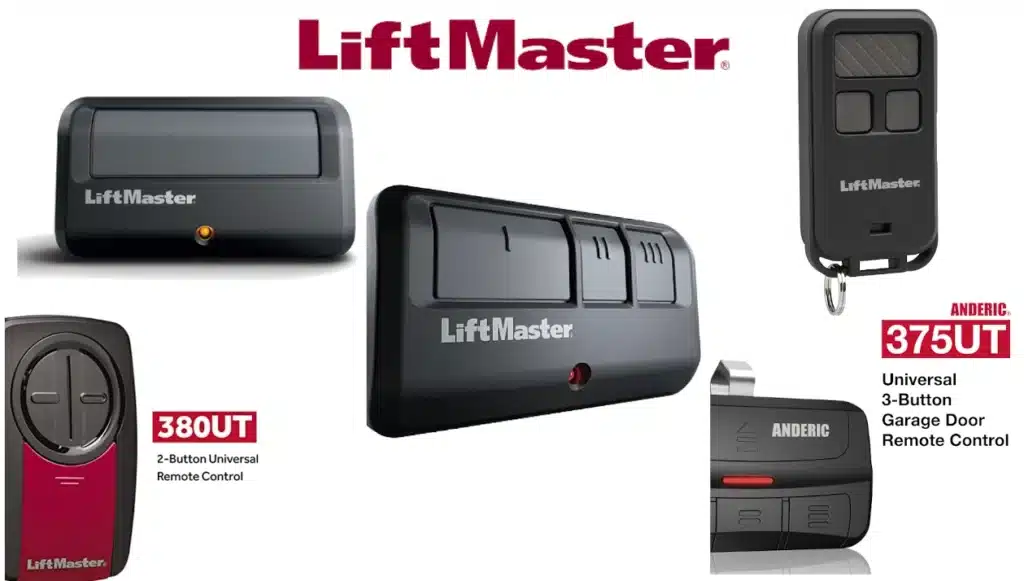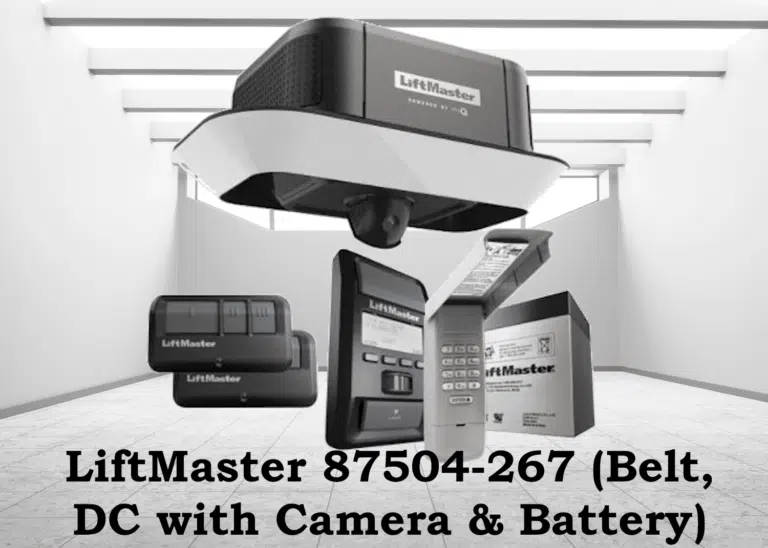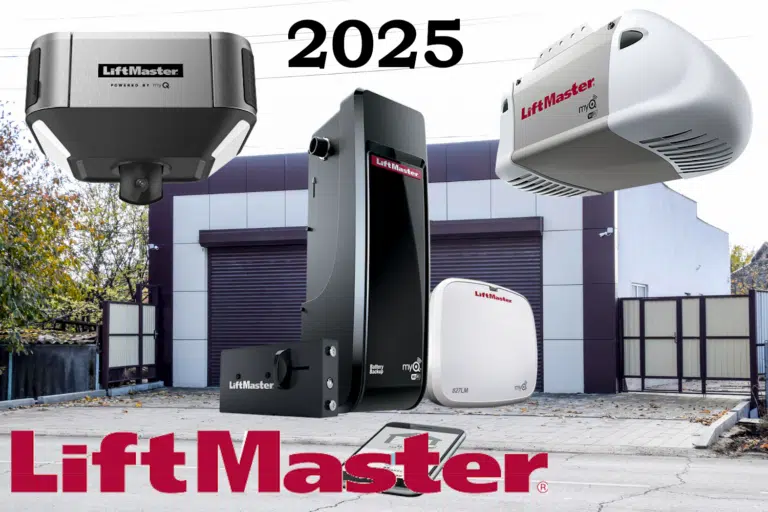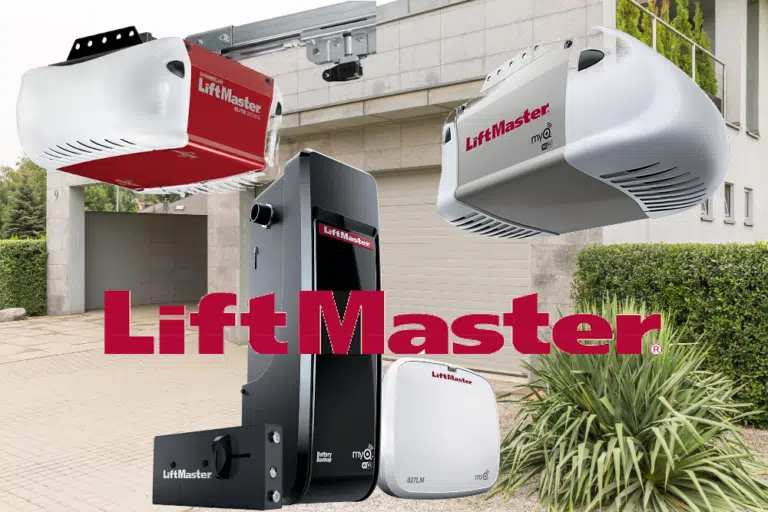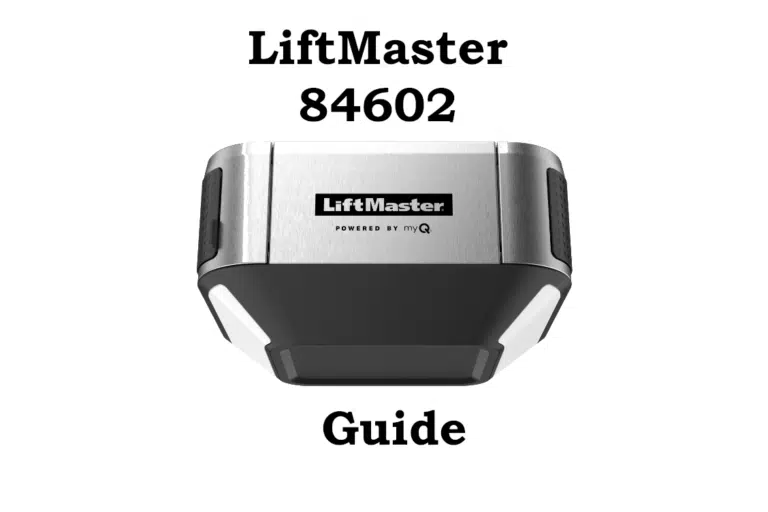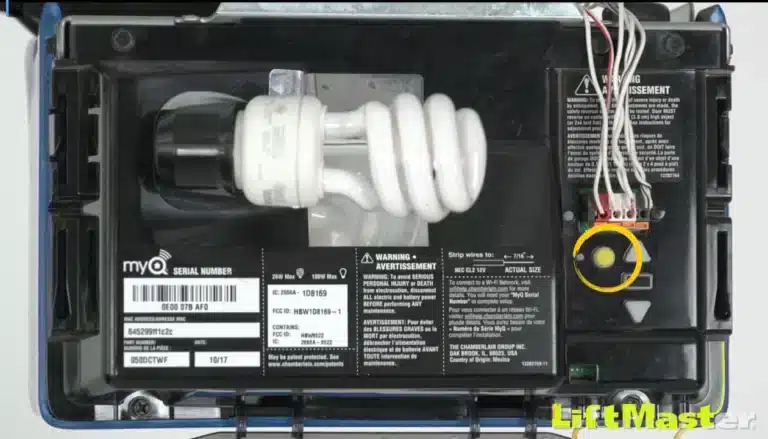If you’re searching for the right remote control for your LiftMaster garage door opener, you’ll find plenty of options tailored to different needs. From simple one-button remotes to advanced multi-button keychain fobs, LiftMaster offers a wide range of models. While the model numbers may seem a bit confusing at first, they actually help identify the remote’s type and generation. In this guide, we’ll walk you through the most popular remote control options for LiftMaster garage door openers and explain what makes each one unique.
Liftmaster 371LM Garage Door Opener Remote
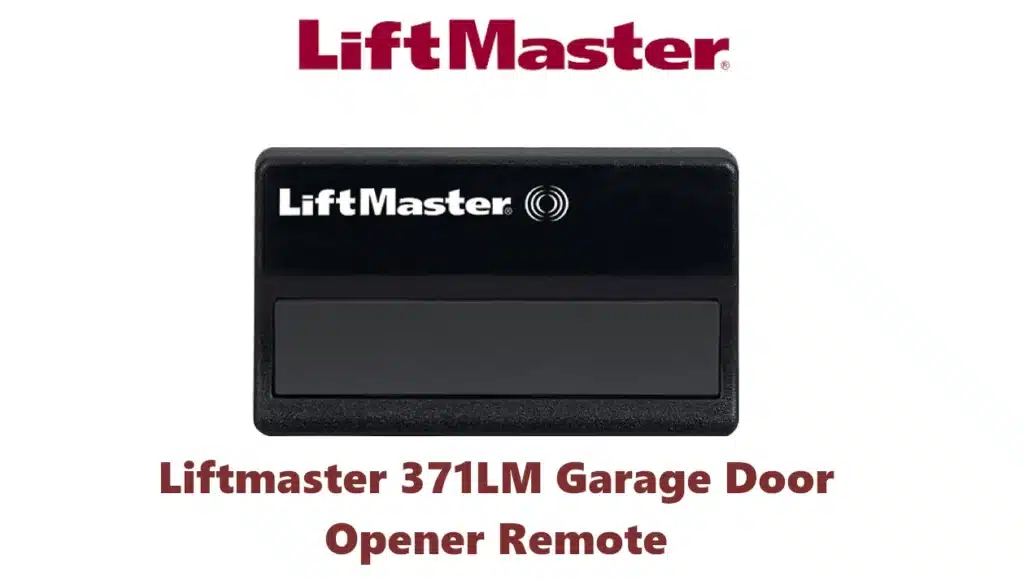
A popular one-button visor remote from the Security+ era. The 371LM operates on 315 MHz and is typically used for openers with a purple “Learn” button (Security+ 315 MHz). It has one large button to control a single garage door or gate. Homeowners with mid-2000s LiftMaster or Chamberlain openers often use this model. It’s valued for its simplicity and comes with a visor clip to mount in your car. (For reference, the 371LM is the 315MHz counterpart to the older 971LM which was 390MHz for earlier units – the number “1” in 371 indicates one button, and “371” vs “971” signifies the frequency difference.)
Liftmaster 893MAX 3-Button Garage Door Remote Control
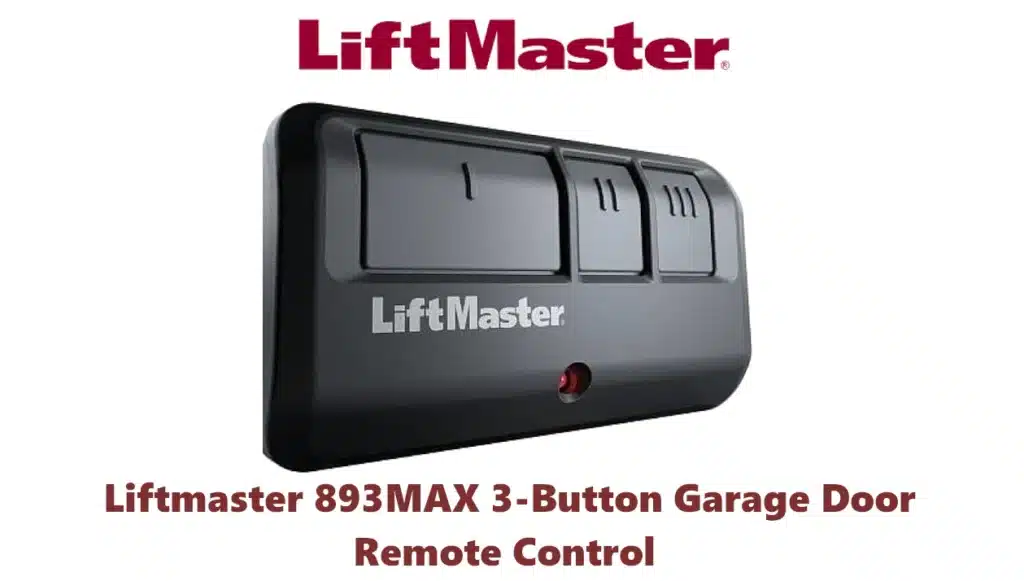
A three-button “universal” visor remote that LiftMaster introduced to be compatible with all their openers made since 1993. The MAX series (893MAX for visor style, and 890MAX for mini) can work on 390 MHz, 315 MHz, and with Security+ 2.0 – essentially covering green, orange/red, purple, or yellow learn button openers. The 893MAX has three buttons, meaning it can control up to three different garage doors or gates, or even MyQ-enabled light accessories. It’s a versatile choice if you have multiple openers or if you’re unsure which remote to get for an older opener – the 893MAX likely “just works” with it after proper programming. Many homeowners get the 893MAX as a replacement remote because of this broad compatibility.
LiftMaster 890MAX Mini Key Chain Garage Door Opener Remote
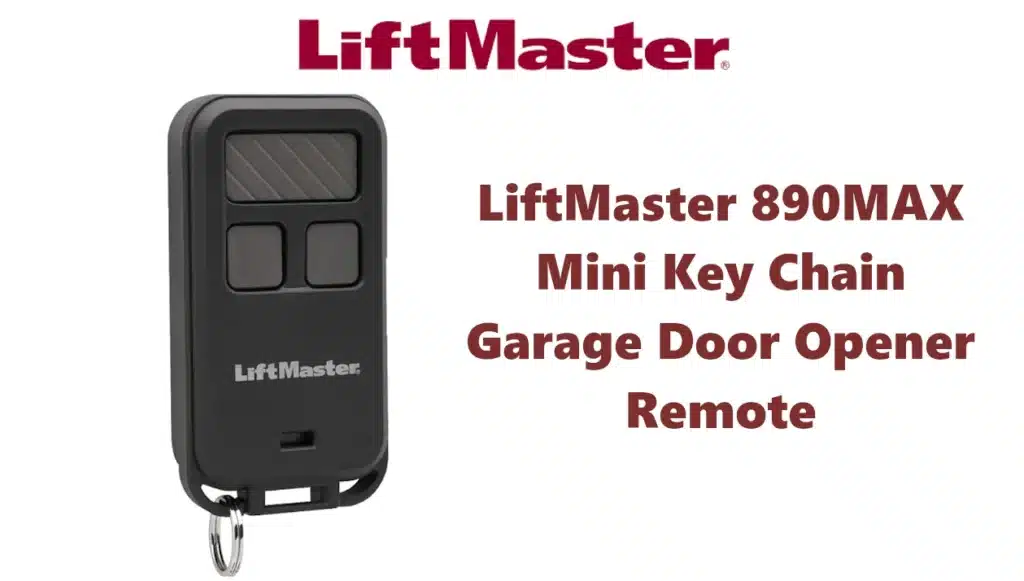
This is a mini keychain version of the MAX remote. Functionally it’s similar to the 893MAX (it can also work across all LiftMaster frequencies), but it’s much smaller – designed to hang on a keychain or fit in a pocket. Despite the compact size, the 890MAX still has three buttons. People often use the 890MAX when they want a portable remote to carry with them (for example, if you want a remote on your keyring in addition to the main one in your car). The trade-off is the buttons are tinier due to the mini form factor, but it’s every bit as capable as the visor-sized remotes.
LiftMaster 891LM Security+ 2.0 1-Button Gate Operator Remote Control

A one-button remote that features LiftMaster’s latest Security+ 2.0 technology. The 891LM is essentially the “modern” replacement for the old 371LM, intended for openers with a yellow learn button (Security+ 2.0). It operates on the Tri-Band (310/315/390 MHz) frequencies and is only needed if you exclusively want a remote for a newer LiftMaster opener. In fact, the Chamberlain brand equivalent is often listed as model 950ESTD – effectively the same remote with different branding. If you see 950ESTD in a parts list, know that it corresponds to the LiftMaster 891LM. This remote can control one device (one door or gate) and comes with Security+ 2.0 encryption for maximum security. If your opener was made in 2011 or later, the 891LM/950ESTD is likely the direct compatible remote to use (unless you opt for a backwards-compatible MAX series).
375UT and 380UT Universal Liftmaster Garage Door Opener Remote
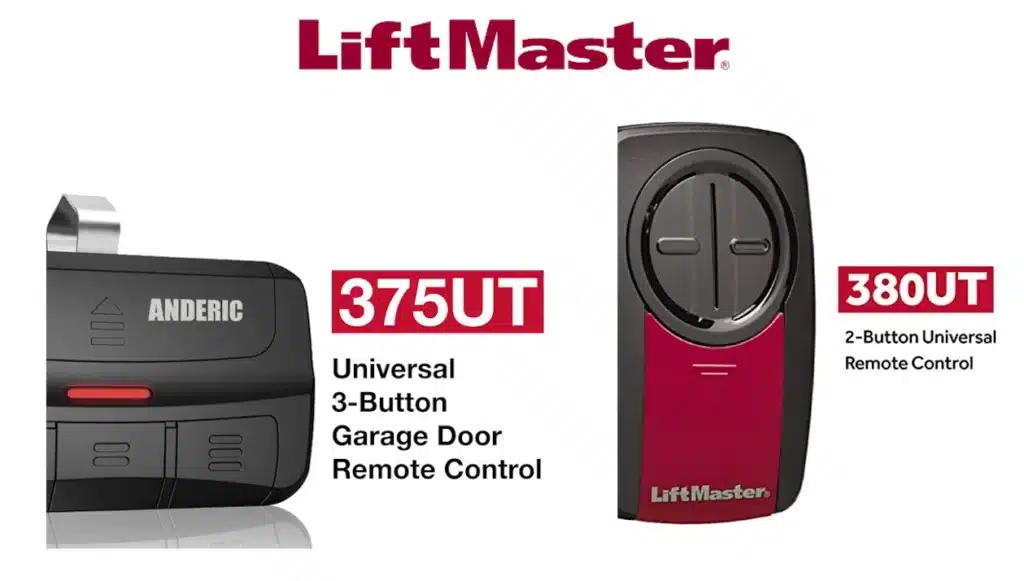
In addition to the above LiftMaster-specific models, the company also offers universal remotes like the 375UT and 380UT. These remotes are designed to work not just with LiftMaster, but with many major brands of garage door openers. For example, the 380UT is a two-button universal remote that can be programmed to LiftMaster as well as other common brands (Genie, Linear, Stanley, etc.). LiftMaster/Chamberlain’s universal remotes typically have a programming process where you specify the brand or learn the frequency. They’re great if you have two different opener brands in one place (say, one door has a LiftMaster opener and another door has a Genie opener – one 380UT remote could operate both). Universal remotes provide flexibility, but if you only have LiftMaster openers, a regular LiftMaster remote (like those above) might be simpler to set up.
Keep in mind that older LiftMaster remotes from the 1990s (like the 61LM, 81LM, 971LM, 973LM, etc.) were made for earlier technologies (Billion Code or original Security+). Many of these older models have been discontinued, replaced by the MAX series which can emulate them. For instance, instead of finding a new 973LM (which was a 3-button Security+ 390MHz remote), you can use an 893MAX programmed to that older opener – achieving the same result with a current product. When choosing a remote, you’ll mainly consider how many buttons you need and what year/technology your opener is. The good news is LiftMaster’s lineup has you covered from the simplest one-button unit to multi-door remotes and even universal options to cover any brand.
How LiftMaster Remotes Work with the Opener’s Technology
Understanding how your particular LiftMaster remote communicates will help in programming and troubleshooting it. As mentioned, LiftMaster uses a few generations of code technology:
Security+ remote control for liftmaster (Rolling Code):
Introduced in the mid-1990s, Security+ remotes change their code with every press. There are two main frequency versions of Security+: one operates at 390 MHz (used in openers with an orange/red learn button, roughly 1997–2005 models) and another at 315 MHz (used in openers with a purple learn button, roughly 2005–2011 models). Both types offer a high level of security with trillions of possible codes (hence the term “billion code” sometimes used for the earliest ones) and are not susceptible to simple hacking.
The difference is purely the radio frequency – LiftMaster switched to 315 MHz in the mid-2000s to reduce interference, since the 390 MHz band was getting crowded. If you have an older LiftMaster remote, you might notice it has “Security+” printed on it and possibly the MHz noted on the back. These remotes will only work with an opener that has a matching receiver frequency. Tip: The color of the opener’s Learn button is an easy identifier – e.g. purple = use a 315 MHz Security+ remote like 371LM; orange = use a 390 MHz remote like 971LM. (If you use a MAX or universal remote, it will automatically adjust to the correct frequency during programming.)
Security+ 2.0 control for liftmaster
Introduced around 2011, this is LiftMaster’s upgraded rolling code system. Security+ 2.0 remotes (typically ones with model numbers ending in “LM” like 891LM, 893LM, etc., and all MAX series in universal mode) use an even more secure encryption algorithm and transmit on three frequencies simultaneously: 310, 315, and 390 MHz. If your garage door opener has a yellow learn button, it’s a Security+ 2.0 system.
These remotes send a rolling code just like older ones, but the encryption is different and the multi-frequency feature means better range and reliability. LiftMaster advertises that Security+ 2.0 “virtually eliminates interference” by sending multiple signals. In practice, these remotes also tend to have longer range (you might start opening your door from farther down the driveway) because at least one of the frequencies is likely to get through. Security+ 2.0 is also the technology that enabled features like the MyQ smartphone integration (though remotes themselves don’t use Wi-Fi, the opener does).
All Security+ 2.0 remotes are backward-compatible only with Security+ 2.0 openers – meaning an 891LM remote won’t work on a 2005-era opener (you’d need a MAX remote for that). The converse is also true: older Security+ remotes won’t operate a new Security+ 2.0 opener (the new opener simply won’t “understand” the old rolling code format). This is why LiftMaster came out with the MAX series, which essentially can speak both languages.
DIP Switch Remotes control for liftmaster (Pre-1993):
Before rolling codes, LiftMaster (under Chamberlain, Sears Craftsman, etc.) used DIP switch remotes. These have 8–12 little switches inside the remote and the opener that you set to a matching pattern to create a code. If you have a really old opener (late 80s to early 90s) with no learn button but a series of switches, then you’d need a compatible DIP remote (e.g. model 61LM for 390 MHz with 9 switches, or others depending on the system).
These are not rolling-code, so the security relies on the obscurity of the switch combination (which yields a few thousand possible codes). They operate on various fixed frequencies (300, 310, 390 MHz were common). While LiftMaster doesn’t make those remotes new anymore, you can use a LiftMaster universal remote like the 374UT to mimic a DIP-switch remote by manually setting its internal switches. However, since 1993 all openers were required to have safety sensors, and around that time rolling code tech came in – so only if you have a very old unit would DIP be relevant. For most readers, you’ll be dealing with Security+ or Security+ 2.0 remotes.
In summary, LiftMaster remotes either use Security+ or Security+ 2.0 rolling code technology (unless we’re talking pre-1993). The exact model of your remote determines which method and frequency it uses. The good news is all genuine LiftMaster remotes are designed to be easy to program (next section) regardless of the tech under the hood. And if you ever forget which type you have, just check the learn button color on your motor unit or the model number of your remote – that will quickly tell you the compatibility (we’ll provide a handy chart by learn button color later in this guide).

